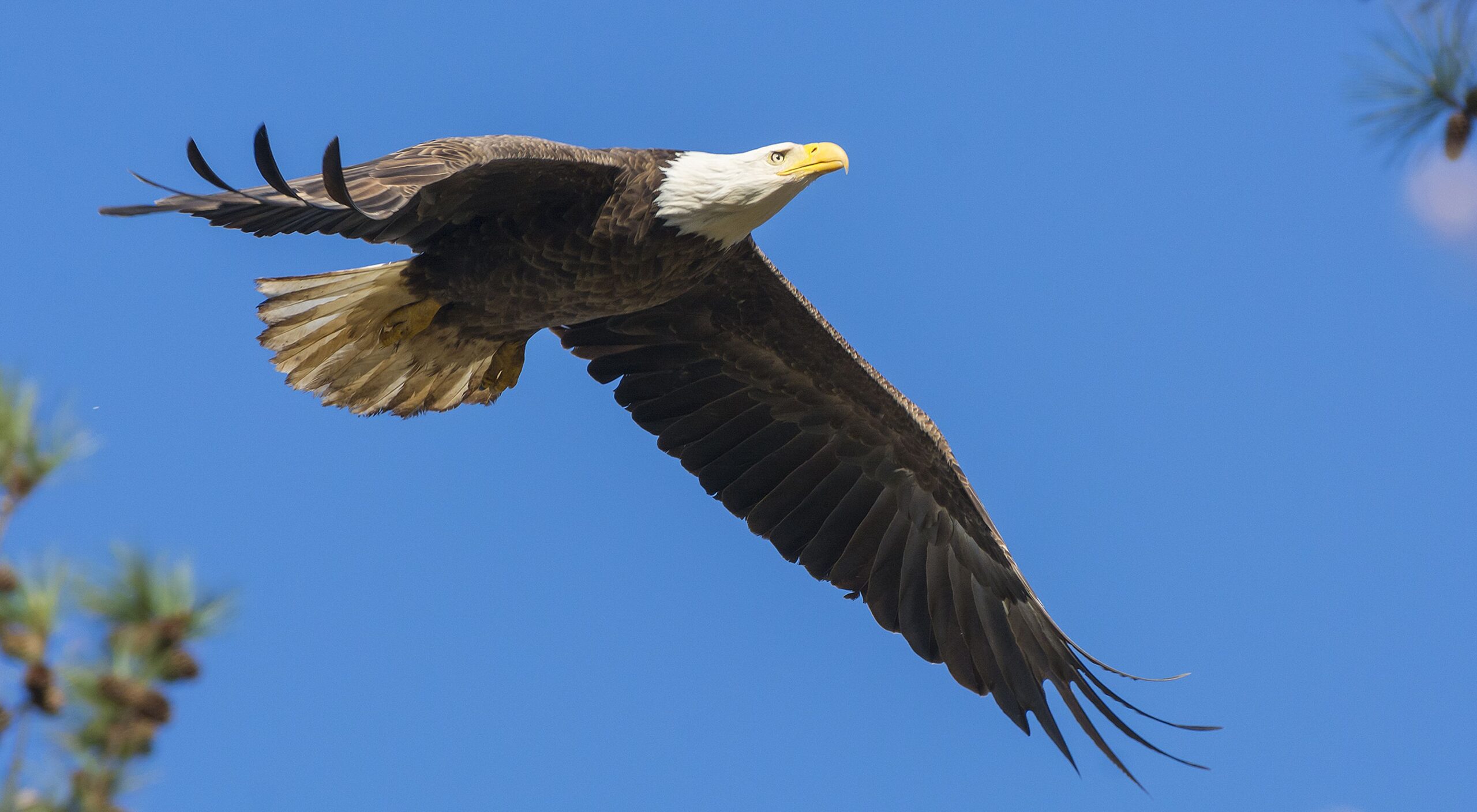COMMENTARY BY DAVE SAMUEL
When the average person sees our national emblem, the bald eagle, the word “majestic” comes to mind. I’m no different. There is something about eagles that stirs our soul and helps us relate to our country and our environment. It’s always been that way for Native Americans and Alaska Natives, and they have used eagle feathers for religious and cultural purposes for hundreds of years.
Depending what state you drive in, the sight of a mature bald eagle is not uncommon. It wasn’t always this way. In 1963, there were only 486 nesting pairs of bald eagles in the United States and extinction was a real possibility. The reason was that the eagles were eating fish contaminated with the pesticide DDT. This chemical prevented the production of strong eggshells, so much so that their eggs often broke during incubation or otherwise failed to hatch.
In 1972, DDT was banned in the United States and ever since that time, bald eagles have made a steady growth. In modern times the first bald eagle nest in West Virginia was seen in 1981, and today, more than 100 nests occur here. This is nothing compared to the 30,000 bald eagles residing in Alaska, but their sightings are still attention getters.
Since Native Americans and Alaska Natives use eagle feathers for cultural and religious ceremonies, they have a need for them. However, as a protected species, there existed a bit of a conundrum. That was resolved in the early 1970s when the U.S. Fish and Wildlife Service created the National Eagle Repository near Denver. The purpose of this facility is to provide a location for the receipt, storage and distribution of bald and golden eagles found dead throughout the United States.
Government regulations determine the distribution of eagle feathers to Native Americans who want to obtain parts of eagles. You have to be 18 years of age and fill out an application to obtain eagle feathers and parts of eagles. The repository gets eagles from federal and state conservation agencies, zoological parks, federal rehabilitators and others who may legally possess and transport dead eagles.
There is no question that some living eagles are illegally taken from the wild, but the repository and leaders of the various Native American tribes work hard to reduce the pressure to do so. Plus, there are laws making such removal illegal. No one can legally buy, sell, trade, import, or exports eagle feathers or items made from eagle feathers.
Demand for feathers by Native Americans is such that there are waiting times for orders to be filled. Applicants have to wait approximately two years for a whole bird,and one year for a pair of wings from a bald eagle. For 10 quality bald or golden eagle feathers, the waiting time is six months and for 20 miscellaneous feathers the wait is three months.
If a Native American owned an eagle feather and eagle parts gotten before they were first protected by federal law (1940 for bald eagles, 1962 for golden eagles), they can possess them. If the feathers were passed down within a family, they can possess them and if a Native American received feathers as a gift from another Native American, they can possess them.
Native Americans may wear the feathers in their possession or make them into religious or cultural items for tribal or personal use. Again, no one, Native American or otherwise, can kill or capture eagles. Those doing eagle research can get a permit to capture eagles from the U.S. Fish and Wildlife.
Back in the 1700s, Congress debated putting the bald eagle on the Congressional Seal, making it our national emblem. Ben Franklin did not like the idea. Right after the Declaration of Independence was signed in 1776, Franklin, Thomas Jefferson and John Adams were selected as a committee to design the seal. The designs included Hercules and the children of Israel and were so bad that Congress tabled the ideas.
A second committee in 1780 failed as did a third committee in 1782 (although one committee member did have an eagle in his proposal). Since Congressional Committees couldn’t get it done, Congress turned the job over to their secretary, a man named Charles Thomson. Thomson’s eagle drawings were bad, but verbally he wanted “an American eagle on the wing, and rising proper.” “American” eagle referred to bald eagles, commonly seen around various colonies at the time.
Behind the scenes throughout this discussion, Ben Franklin spoke and wrote despairingly about the bald eagle, a predator that killed other animals and a bird that steals the fish captured by ospreys. Clearly, Franklin did not like eagles. He felt the wild turkey was more respectable and a “bird of courage.” Hmm. There are historians that feel that all of Franklin’s comments were tongue in cheek, and indeed he once spoke of the eagle being a “bird of victory.”
The debate ended, and the national emblem became the bald eagle. Revered then and revered today.




